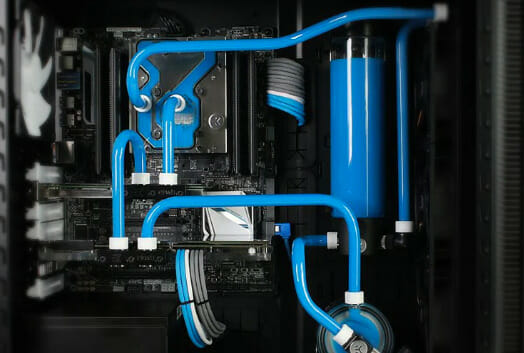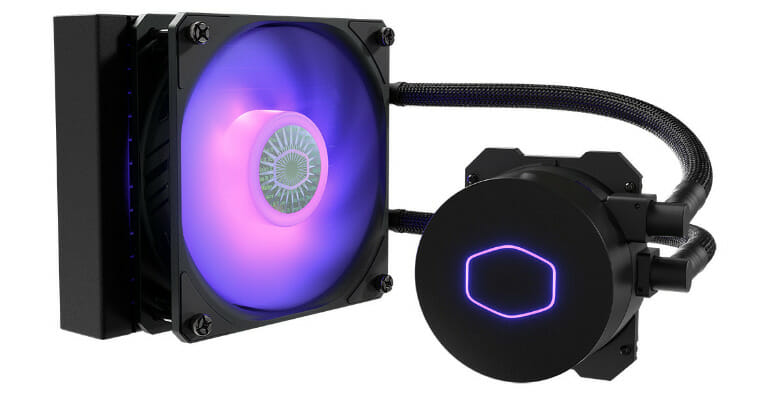
The Raspberry Pi is a versatile and affordable computer that has become increasingly popular among hobbyists, makers, and tech enthusiasts. While it can handle many computing tasks, it can also get quite hot when running resource-intensive applications.
To prevent overheating and ensure optimal performance, many Raspberry Pi users turn to cooling solutions, such as heat sinks and fans. However, some adventurous enthusiasts have taken it a step further and started experimenting with water-cooling their Raspberry Pi devices.
In this article, we will explore the potential benefits of water cooling a Raspberry Pi and discuss the steps and materials needed to undertake such a project.
![Your Guide To Raspberry Pi Water Cooling Can You Water Cool A Raspberry Pi? [Everything You Need To Know]](https://raspians.com/wp-content/uploads/2023/02/Can-You-Water-Cool-A-Raspberry-Pi-Everything-You-Need-To-Know.jpg)
Can You Water Cool A Raspberry Pi?
Technically, yes, you can water cool a Raspberry Pi computer, if you wish, but most Raspberry Pi users prefer to use other methods to cool down their minicomputers, as using water as a cooling system can prove to be a little bit unwieldy, and even a touch overkill.
Despite the fact that installing a water cooler onto a Raspberry Pi increases the overall size of the unit, it does actually have numerous positive benefits that improve the performance of the computer.
Raspberry Pi computers are able to run more efficiently when water-cooled, and can even run while overclocked when cooled down sufficiently.
Studies have shown that Raspberry Pi computers can run at 100% clocking at room temperature, and the unit will eventually reach a total temperature of 31 degrees. However, when a water cooler was attached, the Raspberry Pi computer, in a room of the same temperature, was able to run overclocked to 133% while only recording a slight temperature increase
Most Raspberry Pi users would not bother with a water cooling system, as they would instead choose to run heavier programs on a computer that can better handle the strain on the computer’s processing capacity.
However, many users build what are known as ‘Clusters’, which are basically large assemblies of multiple Raspberry Pi computers that all work together.
Clusters of Raspberry Pi computers are a far better candidate for water cooling because of the increase in processing power, and the size of a cluster can justify the total size of a water cooling tower.
How To Water Cool A Raspberry Pi

There is no straightforward method to go about water cooling your Raspberry Pi. You can either purchase a kit such as the LiquidMaster ML120L from Cooler Master or collect all the separate components and make a custom water cooling loop.
Neither of these options will work straight out of the box, so you will need to be prepared to problem-solve and potentially make modifications to the components in order for them to suit a Raspberry Pi.
Note: This is a general guide to installing a water cooling loop on a computer. There will need to be some DIY problem-solving to adapt it to a Raspberry Pi, so this is definitely a project for more advanced makers.
Unbox the kit
Start by unboxing the water cooling kit and making sure all the components are present.
Install the backplate
Attach the backplate to the back of the motherboard, aligning it with the CPU socket.
Install the standoffs
Install the standoffs on the backplate, securing them in place.
Install the pump
Install the pump onto the CPU, making sure to apply thermal paste first. Attach the pump brackets to the standoffs.
Install the radiator
Mount the radiator next to your Raspberry Pi. You might need to get a little creative here.
Connect the tubing and fill the loop
Connect the tubing from the pump to the radiator, ensuring a secure fit. Fill the loop with the coolant provided, ensuring that the reservoir is filled.
Test the loop
Turn on your computer and check for any leaks. Monitor the temperature of your CPU to ensure the water cooling system is working.
How Else Can You Cool A Raspberry Pi?
If water cooling seems too much for you to attempt, there are a few other simple, cheap, and effective options you might want to try out. Before you go about installing extra cooling, make sure you understand the temperature range your Raspberry Pi is operating at, you might not need extra cooling at all.
Cooling A Raspberry Pi With A Heat Sink
A heatsink is often referred to as a passive cooling solution, as it requires no extra power from the Raspberry Pi computer to do its healing job.
A heat sink is simply placed atop the processor chip, which is the component most likely to heat up. The heatsink will absorb the heat from the unit and then allow the heat to escape into the air.
This is a great smaller solution to retain portability, but make sure to give the heatsink time to cool before picking the unit up between moving it around.
For help on how to do this, check out our guide on installing a heatsink on a Raspberry Pi.
Fan Cooling Your Raspberry Pi
Another popular cooling method for Raspberry Pi computers is simply a fan, which can be attached directly to the unit and blows cool air onto the unit while also blowing away hot air.
This can be good for maintaining portability, but just make sure you buy a fan that is the right size, and that doesn’t consume too much power or make too much noise!
Find out if your Raspberry Pi needs a fan here.
Keep Your Raspberry Pi Open
Once many people have built their Raspberry Pi computers, they choose to place them in specialized cases that are designed to keep all of the internal components safe.
The only problem is, if the unit is overclocked, then these cases can trap heat which can damage the board over time.
Luckily, many cases can be easily removed, so if you know that you will be overclocking your Raspberry Pi, simply remove the case to allow it to cool more naturally.
This solution can also greatly be aided by simply using the computer in a cool environment. If possible, choose a room with plenty of airflow which will naturally help to keep the whole of the unit much cooler over time.

To Wrap Up
Keeping your Raspberry Pi cool is very important, and while most people would choose more conventional cooling methods, such as an open case, a heatsink, or a cooling fan, it is possible to make use of a water cooling system, but it doesn’t really make much sense to do it for a single Raspberry Pi.
If you were utilizing a Raspberry Pi cluster for more complex computing tasks, water cooling starts to make a little more sense. Check out the video below from Michael Klements where he compares various Raspberry Pi cooling options.
